Podcast: Play in new window | Download
Subscribe: Apple Podcasts | RSS
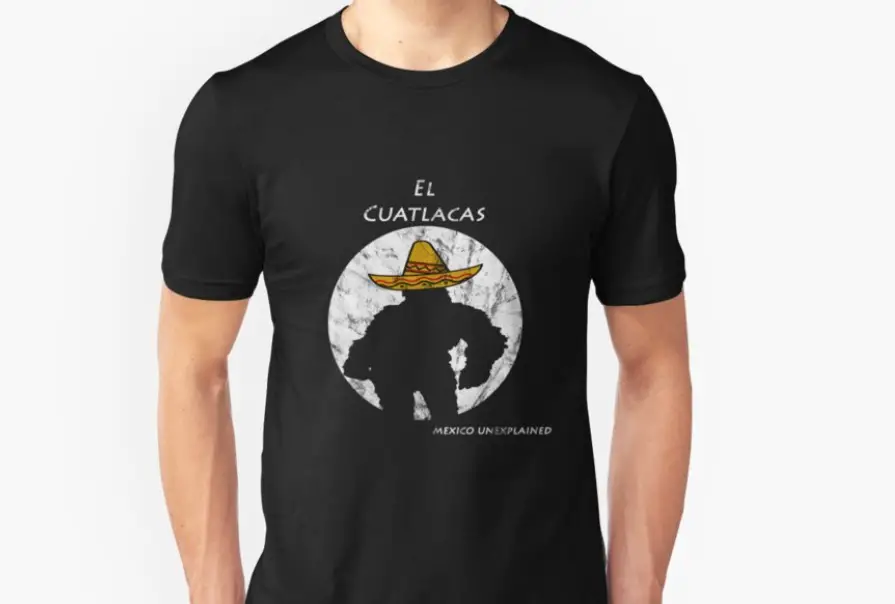 Get the show’s official t-shirt here: https://teespring.com/el-cuatlacas-sombrero?tsmac=store&tsmic=mexico-unexplained&pid=266&cid=6174
Get the show’s official t-shirt here: https://teespring.com/el-cuatlacas-sombrero?tsmac=store&tsmic=mexico-unexplained&pid=266&cid=6174
Sometime in the summer of 2011, somewhere in the old-growth pine forests of the Mexican state of Puebla, Héctor López and two of his friends were cutting timber illegally in a protected area far away from any human settlement and just off an old forest road. When they arrived at their designated woodcutting site they heard animal noises in a nearby thicket of small trees. The grunts and growls were not from any animal that the men were familiar with. They paid little attention to the animal sounds as they revved up their chain saws and went to the task of cutting timber. After felling a dozen or so trees, López and his friends still heard the strange animal noises, but closer and in greater intensity. As it was getting darker, the trio lit a bonfire and settled down to rest. Their plan was to load up their truck and leave the forest for the city at first light. After they built the bonfire the woodcutters noticed a rustling in the trees nearby with the animal noises that they had heard earlier even closer than before. Without giving them much time to react, from out of the trees emerged a 9-foot tall creature, standing upright like a human and covered from head to toe in thick, dark, tangled fur. The creature grabbed one of the felled tree trunks and headed for the truck. One of the three men tried shooting at it, but it just kept coming. They ran down the old forest road to get away. The three men soon happened on some forest rangers and López related to them the story of their encounter. The rangers did not believe the tale and asked the men to take them to the site of their clandestine lumber operation. While they found no trace of the hairy beast, they found the truck totally destroyed. One of the rangers had said that what they had witnessed was the work of the Cuatlacas, a bigfoot-like creature that has lived in the high forests of central Mexico since time immemorial. Héctor López told this story to Carlos Evia Cervantes, a reporter for the Mexican online news resource SIPSE.com and it appeared in an article dated November 2, 2016.
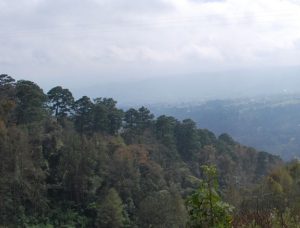 When people think of Mexico, thick and seemingly endless mountain forests of oak and pine rarely come to mind. In the central Mexican state of Puebla, such forests exist and some were not thoroughly explored or mapped until as late as the mid-1800s. The northern third of the state of Puebla is called the Sierra Norte and many old-growth forests of this area remain untouched and protected by the government. Also, Puebla is home to three of Mexico’s tallest mountains, Popocatépetl, Iztaccihuatl and Pico de Orizaba, also known as Citlaltepetl. These tall mountains are perennially snow-capped and their respective environments are reminiscent of the Himalayas or the Alps. Could these inaccessible and harsh environments also be the home of a yet-unclassified humanoid? Legends of such a creature called the Cuatlacas reach back into antiquity and have only recently received attention from cryptozoologists, or those who study legendary and/or previously unknown animals.
When people think of Mexico, thick and seemingly endless mountain forests of oak and pine rarely come to mind. In the central Mexican state of Puebla, such forests exist and some were not thoroughly explored or mapped until as late as the mid-1800s. The northern third of the state of Puebla is called the Sierra Norte and many old-growth forests of this area remain untouched and protected by the government. Also, Puebla is home to three of Mexico’s tallest mountains, Popocatépetl, Iztaccihuatl and Pico de Orizaba, also known as Citlaltepetl. These tall mountains are perennially snow-capped and their respective environments are reminiscent of the Himalayas or the Alps. Could these inaccessible and harsh environments also be the home of a yet-unclassified humanoid? Legends of such a creature called the Cuatlacas reach back into antiquity and have only recently received attention from cryptozoologists, or those who study legendary and/or previously unknown animals.
The name Cuatlacas possibly comes from an old Totonac dialect and loosely means, “forest guardian.” The word made it into Nahuatl, or the Aztec Empire’s language, and then into the local Spanish usage after the Conquest. The Cuatlacas is rarely known outside of the modern Mexican state of Puebla, however, and very few Mexicans have ever even heard of the creature. With the ever-increasing availability of technology and the population and economic pressures being put on the once pristine forested areas of central Mexico, sightings of this creature have been on the increase of late. The Cuatlacas has been described as looking much like the North American Bigfoot or the Yeti of central Asia: between 7 and 9 feet tall, weighing around five to six hundred pounds, covered in dark, matted hair, with somewhat humanlike facial features. The Cuatlacas is hostile to intruders and 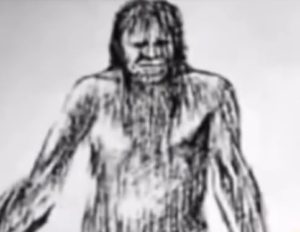 is very territorial. Local legends say that the creature is the custodian of the forest and dislikes human interference in its habitat, so it is best advised to stay away and let the creature be. It is not known to have a language, just very distinctive grunts and howls and usually vocalizes its displeasure when humans are around. It has been known to be violent, as in the case of Héctor López and his destroyed truck. No physical evidence of the Cuatlacas – bones, fur, blood samples, etc. – has ever been found and brought in for scientific analysis. What is left behind often are footprints along with a path of destruction. Encounters with the Cuatlacas are never benign. The creature appears to have a cousin living in the jungles of tropical Mexico and Central America called the Sisimite. Please see Mexico Unexplained Episode #12 for more information about the Sisimite: https://mexicounexplained.com//sisismite-mexicos-jungle-dwelling-bigfoot/ Besides its jungle-dwelling cousin, the Cuatlacas has no other Mexican relatives and very few sightings outside the Mexican state of Puebla. The closest bigfoot sighting is across the border in the United States almost a thousand miles away.
is very territorial. Local legends say that the creature is the custodian of the forest and dislikes human interference in its habitat, so it is best advised to stay away and let the creature be. It is not known to have a language, just very distinctive grunts and howls and usually vocalizes its displeasure when humans are around. It has been known to be violent, as in the case of Héctor López and his destroyed truck. No physical evidence of the Cuatlacas – bones, fur, blood samples, etc. – has ever been found and brought in for scientific analysis. What is left behind often are footprints along with a path of destruction. Encounters with the Cuatlacas are never benign. The creature appears to have a cousin living in the jungles of tropical Mexico and Central America called the Sisimite. Please see Mexico Unexplained Episode #12 for more information about the Sisimite: https://mexicounexplained.com//sisismite-mexicos-jungle-dwelling-bigfoot/ Besides its jungle-dwelling cousin, the Cuatlacas has no other Mexican relatives and very few sightings outside the Mexican state of Puebla. The closest bigfoot sighting is across the border in the United States almost a thousand miles away.
Although there is so far no physical evidence of the existence of the Cuatlacas there may be some archaeological and historical ethnographic evidence that the creature was known to pre-Hispanic peoples in Mexico. A clay artifact dating back 2,000 years found in the Mexican state of Campeche – just a few hundred miles from the supposed current range of the Cuatlacas – nicknamed “The Olmec Ape” depicts a large, hairy, human-like creature. In addition, when Spanish explorers first encountered the complex living indigenous civilizations of central Mexico they heard stories of the Quinametzin. The Quinametzin were a race of hairy giants who are credited with building many of the cities with monumental architecture that existed in ruin at the time of the Aztec arrival in central Mexico. These hairy giants used to do battle with ordinary humans but were punished and exiled by the gods for their lack of reverence to them. Great calamities were brought upon the Quinametzin and their culture and civilization were destroyed, returning them to a more animalistic state. Some modern-day cryptid researchers believe that the Quinametzin were not really a different race or tribe of people at all, or part of ancient Mesoamerican myth, but a reference to the Cuatlacas or a similar Bigfoot-like creature.
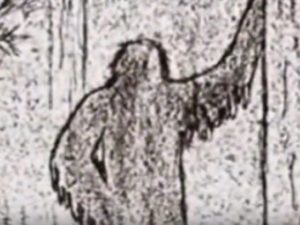 As previously mentioned, some of the highest peaks in Mexico are still in a glacial age and pine forests yield to snow fields at the higher elevations. The harsh environments on the slopes of Mexico’s largest mountains have spawned the need for an alpine rescue division of the parks service and a cadre of trained professionals to assist hikers in peril. Extreme mountaineering has become increasingly more popular in Mexico in the past twenty years and many experienced park officials and Mexican cold-climate mountain climbers have had sightings of the Cuatlacas on the slopes of Mexico’s formidable peaks. One such professional is Guillermo Vidales who described in an on-camera interview his encounters with the bigfoot-like creatures on the icy slopes of the volcano Popocatépetl. He said he was in the Las Grietas area of the mountain on the route to the top of the crater when he saw a tall, thin, dark brown human-looking being scale the side of the volcano at a very rapid pace. The creature did not wear any equipment, which was strange in such extreme weather. What would have taken an experienced hiker a few hours to climb, the hairy being did in about fifteen minutes. The next day, Vidales and members of his hiking team found tracks in the snow. The huge footprints had what appeared to be indentations of a claw coming from the back of the leg, which probably assisted the being in climbing, much like a hiker’s crampon. When the Vidales interview aired, many other experienced hikers came forward with their stories of sightings of tall, hairy humanoids while hiking in the national park that encompasses both the Popcatépetl and Iztaccihuatl volcanoes. On September 15, 2014 acclaimed Mexican UFO researcher Ana Luisa Cid interviewed a man named José Antonio Cisneros about his similar experiences on the slopes of
As previously mentioned, some of the highest peaks in Mexico are still in a glacial age and pine forests yield to snow fields at the higher elevations. The harsh environments on the slopes of Mexico’s largest mountains have spawned the need for an alpine rescue division of the parks service and a cadre of trained professionals to assist hikers in peril. Extreme mountaineering has become increasingly more popular in Mexico in the past twenty years and many experienced park officials and Mexican cold-climate mountain climbers have had sightings of the Cuatlacas on the slopes of Mexico’s formidable peaks. One such professional is Guillermo Vidales who described in an on-camera interview his encounters with the bigfoot-like creatures on the icy slopes of the volcano Popocatépetl. He said he was in the Las Grietas area of the mountain on the route to the top of the crater when he saw a tall, thin, dark brown human-looking being scale the side of the volcano at a very rapid pace. The creature did not wear any equipment, which was strange in such extreme weather. What would have taken an experienced hiker a few hours to climb, the hairy being did in about fifteen minutes. The next day, Vidales and members of his hiking team found tracks in the snow. The huge footprints had what appeared to be indentations of a claw coming from the back of the leg, which probably assisted the being in climbing, much like a hiker’s crampon. When the Vidales interview aired, many other experienced hikers came forward with their stories of sightings of tall, hairy humanoids while hiking in the national park that encompasses both the Popcatépetl and Iztaccihuatl volcanoes. On September 15, 2014 acclaimed Mexican UFO researcher Ana Luisa Cid interviewed a man named José Antonio Cisneros about his similar experiences on the slopes of 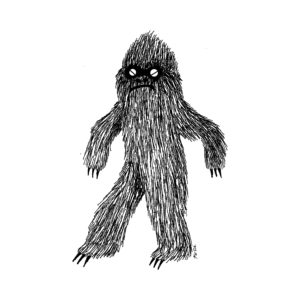 Popocatépetl. Cisneros claimed that there are two types of unknown beings that live on the volcano, a smaller being that is mostly white with large black eyes which serves as a sort of custodian to the forest, an elemental being, much like the Chaneque of Aztec myths and legends. For more information about chaneques, please see Mexico Unexplained episode #59. Cisneros also claimed to have contact with the taller, thin, hairy beings reported by many other hikers. Cisneros told Ana Luisa Cid that he believed that the taller, thinner humanoid creatures are part of the UFO phenomenon and they come directly from extraterrestrial craft, which is a more modern twist to the legend that reaches back thousands of years. As with Bigfoot research in the United States and Canada, research on the Cuatlacas branches off from zoology into the purely paranormal. Researchers are unable to determine if this is some sort of spirit being, something connected to extraterrestrial visitation or a flesh-and-blood terrestrial animal previously undescribed. There has been very little investigation by foreigners into this somewhat regional cryptid. As the story of the Cuatlacas becomes known outside of Mexico, perhaps this ancient creature will attract the attention of serious Bigfoot hunters, or perhaps the curious investigators will heed the advice of the locals and just leave the Cuatlacas alone to serve as the guardians of the forest as they always have been.
Popocatépetl. Cisneros claimed that there are two types of unknown beings that live on the volcano, a smaller being that is mostly white with large black eyes which serves as a sort of custodian to the forest, an elemental being, much like the Chaneque of Aztec myths and legends. For more information about chaneques, please see Mexico Unexplained episode #59. Cisneros also claimed to have contact with the taller, thin, hairy beings reported by many other hikers. Cisneros told Ana Luisa Cid that he believed that the taller, thinner humanoid creatures are part of the UFO phenomenon and they come directly from extraterrestrial craft, which is a more modern twist to the legend that reaches back thousands of years. As with Bigfoot research in the United States and Canada, research on the Cuatlacas branches off from zoology into the purely paranormal. Researchers are unable to determine if this is some sort of spirit being, something connected to extraterrestrial visitation or a flesh-and-blood terrestrial animal previously undescribed. There has been very little investigation by foreigners into this somewhat regional cryptid. As the story of the Cuatlacas becomes known outside of Mexico, perhaps this ancient creature will attract the attention of serious Bigfoot hunters, or perhaps the curious investigators will heed the advice of the locals and just leave the Cuatlacas alone to serve as the guardians of the forest as they always have been.
REFERENCES
The following web sites:
Tercer Milenio
Ana Luisa Cid’s UFO Investigations
CICAC
YouTube
SIPSE.com

One thought on “El Cuatlacas, the Other Mexican Bigfoot”
Robert Bitto, thank you for this post. Its very inspiring.